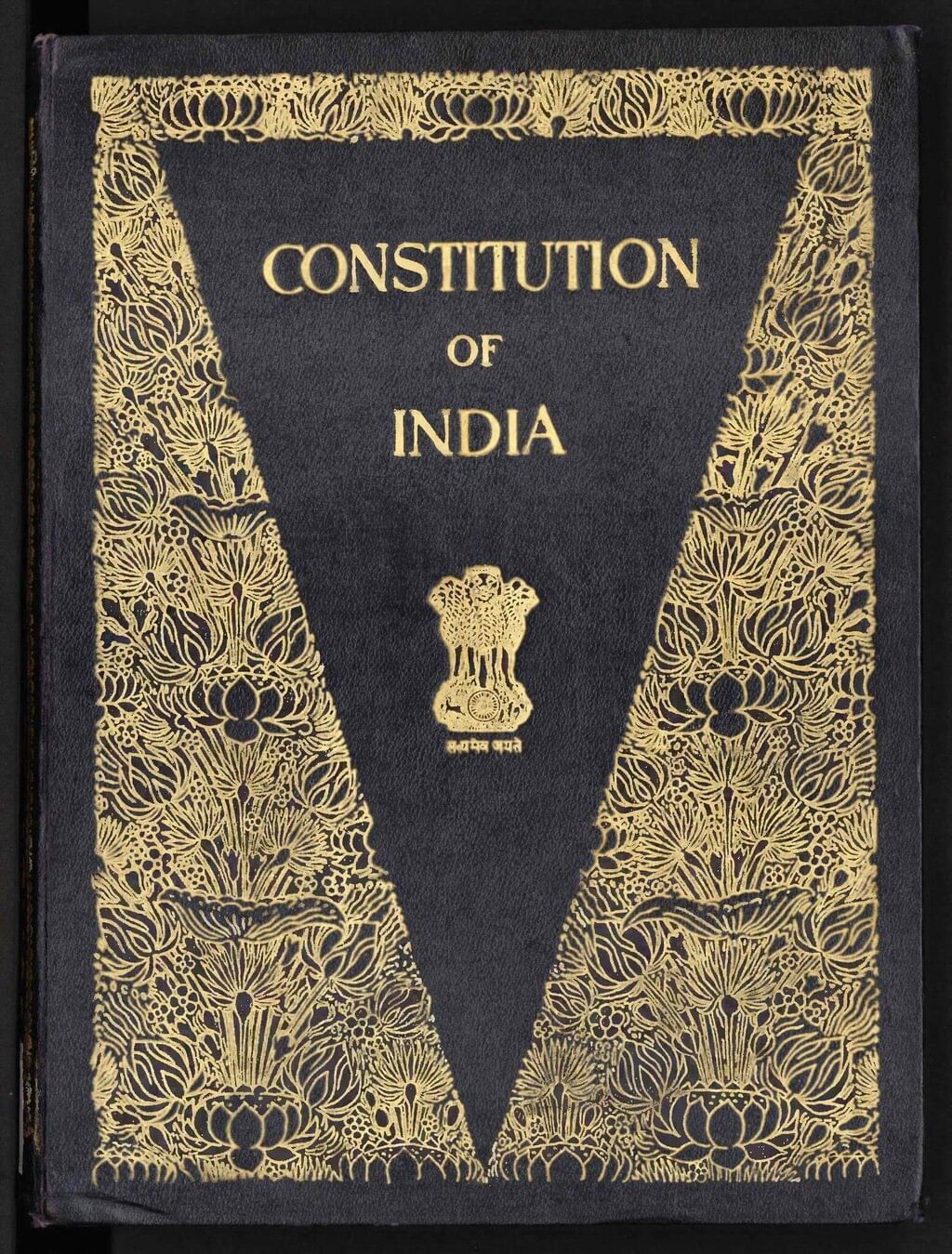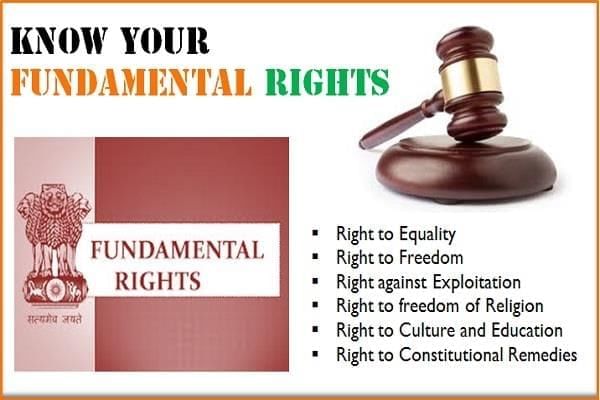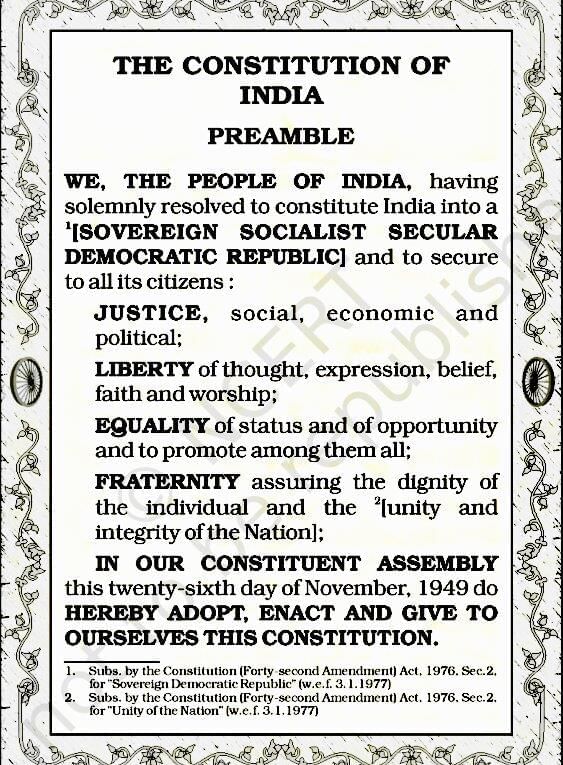Important Question: The Constitution of India | Social Science Class 7 - New NCERT PDF Download
Q1: When was the Indian Constitution adopted?
a) 26 January 1950
b) 15 August 1947
c) 26 November 1949
d) 9 December 1946
Answer: c
Q2: What is celebrated on 26 January every year?
a) Independence Day
b) Republic Day
c) Constitution Day
d) Freedom Day
Answer: b
Q3: Who was the Chairman of the Constituent Assembly?
a) Dr. B.R. Ambedkar
b) Dr. Rajendra Prasad
c) Dr. Sachidananda Sinha
d) Jawaharlal Nehru
Answer: b
Q4: Which part of the government makes laws?
a) Executive
b) Judiciary
c) Legislature
d) President
Answer: c
Q5: What does the term ‘secular’ in the Preamble mean?
a) No official religion
b) Economic equality
c) Free elections
d) Independent judiciary
Answer: a
Q6: Which country’s constitution inspired India’s Directive Principles of State Policy?
a) USA
b) France
c) Ireland
d) UK
Answer: c
Q7: What ensures that the government remains fair and accountable?
a) Fundamental Duties
b) Checks and balances
c) Preamble
d) Amendments
Answer: b
Q8: Which article of the Constitution guarantees equality before the law?
a) Article 21
b) Article 14
c) Article 38
d) Article 47
Answer: b
Q9: When were Fundamental Duties added to the Constitution?
a) 1950
b) 1976
c) 1992
d) 2004
Answer: b
Q10: Who illustrated the Indian Constitution with scenes from India’s history?
a) Prem Behari Narain Raizada
b) Nandalal Bose
c) Dr. B.R. Ambedkar
d) Dr. Rajendra Prasad
Answer: b
Q11: What is a constitution, and why is it important?
Answer: A constitution is a document listing a country’s basic rules and laws. It is important because it guides government operations, protects citizens’ rights, and ensures fairness and order.
Q12: Name two sources that influenced the Indian Constitution.
Answer: The Indian freedom movement and India’s civilizational heritage.
Q13: What is the role of the judiciary in the government?
Answer: The judiciary ensures laws follow the Constitution, settles disputes, and decides punishments, maintaining fairness.
Q14: Define ‘Fundamental Rights’ and give one example.
Answer: Fundamental Rights are basic rights citizens can demand in court. An example is the right to equality (Article 14).
Q15: What does ‘sovereign’ mean in the Preamble of the Constitution?
Answer: Sovereign means India makes its own decisions, free from outside control.
Q16: Describe the process of writing the Indian Constitution, including key figures and timeline.
Answer: Process of writing the Indian Constitution:
- The Indian Constitution was written by the Constituent Assembly, formed in 1946 with 389 members (later 299 after Partition), including 15 women.
- Dr. Rajendra Prasad was the Chairman, and Dr. B.R. Ambedkar led the Drafting Committee, preparing the initial text.
- The Assembly began work on 9 December 1946, taking nearly three years to complete the Constitution, adopted on 26 November 1949. It came into effect on 26 January 1950, celebrated as Republic Day.
- Members were elected by provincial assemblies, ensuring a democratic process.
- The Constitution reflected India’s freedom struggle, cultural heritage, and global ideas, with contributions from diverse regions and groups, making it a comprehensive rulebook for governance.
Q17: Explain the key features of the Indian Constitution, with examples.
Answer: The Indian Constitution has several key features:
Fundamental Rights: Guarantees rights like equality (Article 14), freedom (Article 21), and education (Article 21-A), enforceable in court, e.g., protection from discrimination.
Fundamental Duties: Lists responsibilities like respecting the Constitution and protecting nature, added in 1976, e.g., preserving cultural heritage.
Directive Principles of State Policy (DPSP): Guidelines for government to ensure justice (Article 38), health (Article 47), and environmental protection (Article 48-A), e.g., improving living standards, though not enforceable.
Separation of Powers: Divides government into legislature (makes laws), executive (implements laws), and judiciary (ensures fairness), e.g., independent judiciary inspired by the USA.
Living Document: Allows amendments, e.g., the 73rd Amendment (1992) added the Panchayati Raj system.
These features ensure democracy, fairness, and adaptability, supporting India’s diverse society and governance structure.
Q18: Discuss the Preamble of the Indian Constitution and its significance in daily life, with examples.
Answer: The Preamble is the introduction to the Indian Constitution, outlining its core values: sovereign, socialist, secular, democratic, republic, justice, liberty, equality, and fraternity.
- It declares the Constitution as made by “We, the People of India,” emphasizing public authority.
- Its significance lies in guiding government policies and citizens’ actions, ensuring fairness and unity.
Daily life significance are:
- Secularism allows people to practice any religion freely, e.g., celebrating Diwali or Eid without state interference.
- Equality ensures job opportunities for all, regardless of caste or gender, e.g., women in government roles.
- Fraternity promotes unity, e.g., communities helping during disasters. The Preamble’s values shape laws and social interactions, fostering a just and inclusive society, reflecting India’s democratic ideals.
|
23 videos|204 docs|12 tests
|
FAQs on Important Question: The Constitution of India - Social Science Class 7 - New NCERT
| 1. What is the Constitution of India and why is it important? |  |
| 2. When was the Constitution of India adopted, and what was significant about this date? |  |
| 3. What are the key features of the Indian Constitution? |  |
| 4. How does the Constitution of India protect the rights of citizens? |  |
| 5. What role does the Preamble play in the Constitution of India? |  |




















